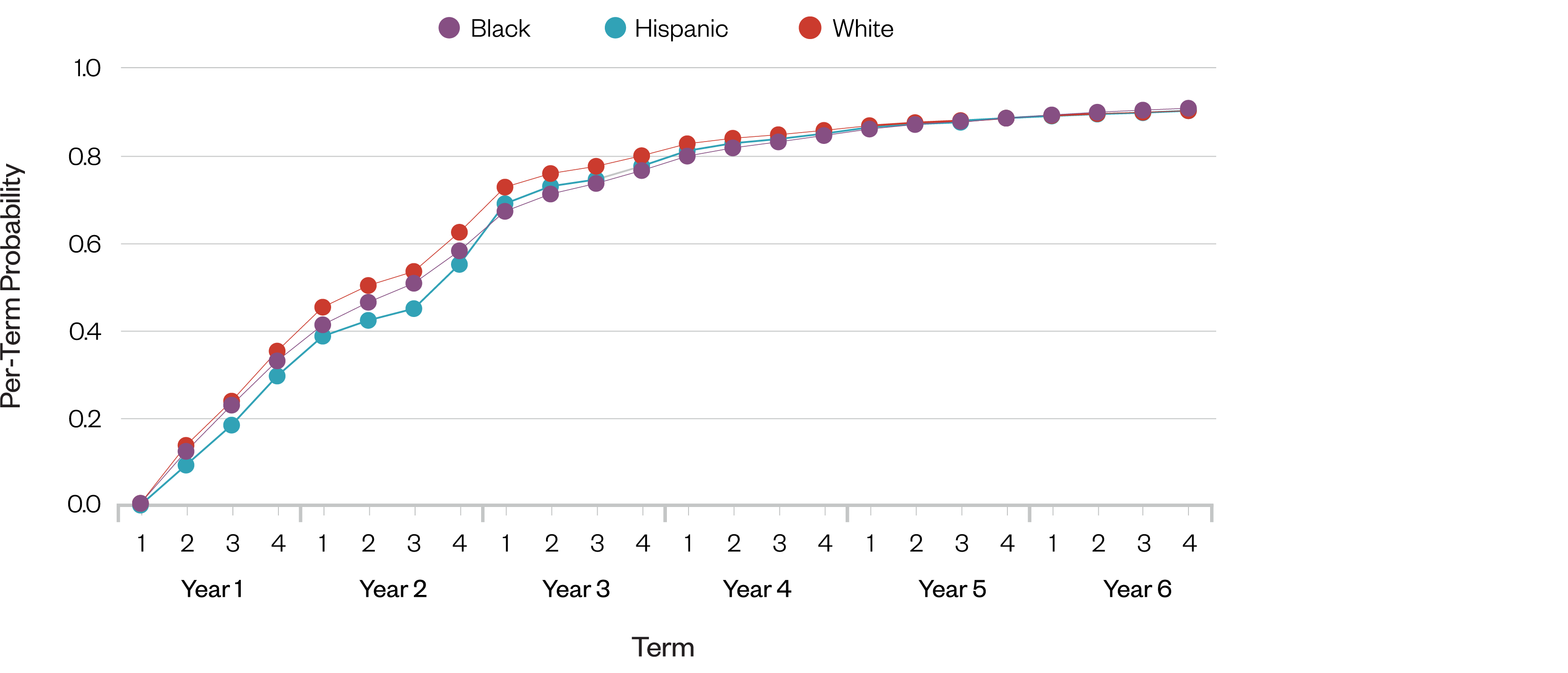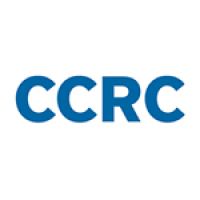By Yuxin Lin, Maggie P. Fay, and John Fink
Racial/ethnic equity gaps in community college student outcomes are well documented. Less is known, however, about when the gaps emerge and when along students’ trajectories educator intervention may be particularly effective in closing gaps in the long term.
Looking back nine years at beginning community college students in one anonymous state, we charted the emergence of racial/ethnic equity gaps in long-term outcomes, with a particular focus on high-opportunity pathways through community college, such as those leading to higher-wage workforce credentials or transfer to bachelor’s degree programs. We observed equity gaps in long-term outcomes, and our research revealed when gaps emerged between Black, Hispanic, and white students, suggesting periods in students’ trajectories when they may need more support to persist to degree completion and transfer.
This research, laid out in a new paper, also suggests that helping students achieve key academic milestones may be crucial for closing racial/ethnic equity gaps in longer-term postsecondary outcomes. For instance, while reaching academic milestones such as earning 24 credits is generally beneficial across subgroups, doing so boosted the likelihood of long-term success more for Black and Hispanic students than for white students. This implies that early intervention to close equity gaps in reaching academic milestones is a promising approach for closing gaps in longer-term outcomes.
How does the completion of academic milestones change the probability of longer-term success?
Building on a rich theoretical and empirical evidence base, we tested how completion of various academic milestones (e.g., completing gateway math/English, credit accumulation, completion of a transfer associate degree) changed the probability of longer-term success. Looking at associate degrees designed for transfer, for example, we found that Black students who completed a transfer associate degree were 13 times more likely to transfer and seven times more likely to complete a bachelor’s degree than Black students who did not complete a transfer associate degree. White students benefitted from completion of a transfer associate degree as well, but to a lesser extent: They were nine times more likely to transfer and five times more likely to complete a bachelor’s degree. We observed a similar pattern for Hispanic students compared to white students. Though Black and Hispanic students experienced greater benefits from the achievement of many of the milestones, they were less likely to reach them than white students. For example, Black students earned associate degrees for transfer at about half the rate of white students in the sample.
The table below summarizes the effects of selected academic milestones.
Benefits of Completing Academic Milestones Especially Large for Black and Hispanic Students

Note: “4x” means about four times more likely than other students in the same group who did not achieve the milestone.
The racial transfer gap closed among students who completed a transfer associate degree
The figure below (left panel) presents the accumulated term-by-term probability of transfer for Black, Hispanic, and white students, thus depicting what is commonly called the “racial transfer gap.” Our analysis shows that the racial transfer gap closed among students who completed a transfer associate degree (right panel) because of the stronger impact of completing the degree for Black and Hispanic students compared to white students. And, not only did the gap close, but the probability of transfer was significantly higher across the board among students who completed a transfer associate degree.
Probability of Transfer Among All Students

Probability of Transfer Among Students Who Completed a Transfer Associate Degree

What does this mean for colleges?
Many community colleges are paying more attention to equity gaps. But community colleges need support to move from an awareness of gaps in degree attainment and transfer by race/ethnicity among their students to identifying mechanisms contributing to these gaps and formulating appropriate strategies to intercede. Knowing when student success trajectories begin to diverge by race/ethnicity may help colleges identify mechanisms giving rise to inequities in outcomes and important junctures when students need support.
Specifically, findings from this study echo prior work establishing completion of academic milestones as a reliable predictor of success in the longer term. We know that fewer Black and Hispanic students reach these milestones than white students, so what can colleges do to boost the number of Black and Hispanic students achieving milestones? This research suggests that key opportunities to address racial/ethnic equity gaps occur early in students’ postsecondary trajectories. Allocating resources and developing supports to help students enter programs of study early, gain credit momentum, and achieve other milestones may be a promising approach to college-wide efforts to close longer-term gaps in student outcomes.
Yuxin Lin is a research affiliate at CCRC, John Fink is a senior research associate at CCRC, and Maggie P. Fay is a research associate at CCRC.





